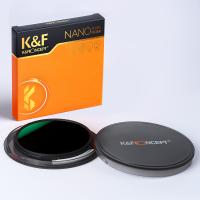What's An Electron Microscope ?
An electron microscope is a type of microscope that uses a beam of electrons to create an image of a sample. It is capable of much higher magnification and resolution than a traditional light microscope, allowing for the visualization of very small structures such as individual atoms. There are two main types of electron microscopes: transmission electron microscopes (TEM) and scanning electron microscopes (SEM). In a TEM, the electrons pass through a thin sample and are focused to create an image on a fluorescent screen or detector. In a SEM, the electrons scan across the surface of a sample and create an image by detecting the scattered electrons. Electron microscopes are widely used in scientific research, particularly in fields such as materials science, biology, and nanotechnology.
1、 Transmission electron microscopy
Transmission electron microscopy (TEM) is a type of electron microscope that uses a beam of electrons to create high-resolution images of thin samples. The electrons pass through the sample, and the resulting image is formed by the interaction of the electrons with the sample. TEM is widely used in materials science, biology, and other fields to study the structure and properties of materials at the nanoscale.
TEM has revolutionized our understanding of the structure and behavior of materials at the atomic and molecular level. With TEM, researchers can study the arrangement of atoms in a material, the distribution of defects and impurities, and the behavior of materials under different conditions. TEM has also been used to study biological samples, such as viruses and cells, at high resolution.
Recent advances in TEM technology have made it possible to study materials and biological samples in even greater detail. For example, aberration-corrected TEM allows researchers to correct for distortions in the electron beam, resulting in sharper images and more accurate measurements. In addition, new techniques such as electron tomography and in situ TEM allow researchers to study materials and biological samples in three dimensions and in real time.
Overall, TEM is a powerful tool for studying the structure and properties of materials and biological samples at the nanoscale. Its continued development and application will undoubtedly lead to new discoveries and insights in a wide range of fields.

2、 Scanning electron microscopy
Scanning electron microscopy (SEM) is a type of electron microscope that uses a focused beam of electrons to create high-resolution images of the surface of a sample. The electrons interact with the atoms in the sample, producing signals that can be detected and used to create an image. SEM is widely used in materials science, biology, and other fields to study the structure and properties of materials at the nanoscale.
In recent years, there have been significant advances in SEM technology, including the development of new detectors and imaging techniques. For example, the use of backscattered electron imaging can provide information about the composition and density of a sample, while energy-dispersive X-ray spectroscopy can be used to identify the elements present in a sample. Additionally, the use of environmental SEM allows for the study of samples in their natural state, such as living cells or wet materials.
Overall, SEM is a powerful tool for studying the structure and properties of materials at the nanoscale. Its ability to provide high-resolution images and detailed information about the composition and properties of samples makes it an essential tool for researchers in a wide range of fields.

3、 Environmental scanning electron microscopy
Environmental scanning electron microscopy (ESEM) is a type of electron microscopy that allows for the observation of samples in their natural state, without the need for extensive sample preparation. ESEM uses a low vacuum environment to allow for the imaging of wet, non-conductive, and even living samples. This technique has been used in a variety of fields, including biology, materials science, and environmental science.
ESEM has become an increasingly popular technique in recent years due to its ability to provide high-resolution images of samples in their natural state. This has allowed researchers to study biological samples, such as cells and tissues, without the need for extensive sample preparation that can alter the sample's natural state. ESEM has also been used to study the structure and properties of materials, such as polymers and ceramics, under different environmental conditions.
One of the latest developments in ESEM is the use of advanced detectors and imaging techniques to provide even higher resolution images. For example, the use of backscattered electron detectors can provide information about the composition and structure of samples, while the use of energy-dispersive X-ray spectroscopy can provide information about the chemical composition of samples. These advances have allowed researchers to study samples at the nanoscale level, providing new insights into the structure and properties of materials and biological samples.
In summary, ESEM is a powerful technique that allows for the observation of samples in their natural state, without the need for extensive sample preparation. The latest developments in ESEM have allowed for even higher resolution imaging and the study of samples at the nanoscale level, providing new insights into the structure and properties of materials and biological samples.

4、 Cryo-electron microscopy
Cryo-electron microscopy is a technique used to study the structure of biological molecules at the atomic level. It involves freezing samples at very low temperatures and then imaging them using an electron microscope. This technique has revolutionized the field of structural biology, allowing researchers to visualize the intricate details of proteins, viruses, and other biological molecules in unprecedented detail.
The latest point of view on cryo-electron microscopy is that it has become an essential tool for drug discovery and development. By understanding the structure of biological molecules, researchers can design drugs that target specific proteins or other molecules involved in disease processes. Cryo-electron microscopy has already been used to develop new treatments for cancer, Alzheimer's disease, and other conditions.
Another recent development in cryo-electron microscopy is the use of artificial intelligence (AI) to analyze the vast amounts of data generated by this technique. AI algorithms can help researchers identify patterns and structures in the images, allowing them to better understand the complex interactions between biological molecules.
Overall, cryo-electron microscopy is a powerful tool that is transforming our understanding of the molecular basis of life. As technology continues to advance, it is likely that this technique will become even more important in the years to come.







































